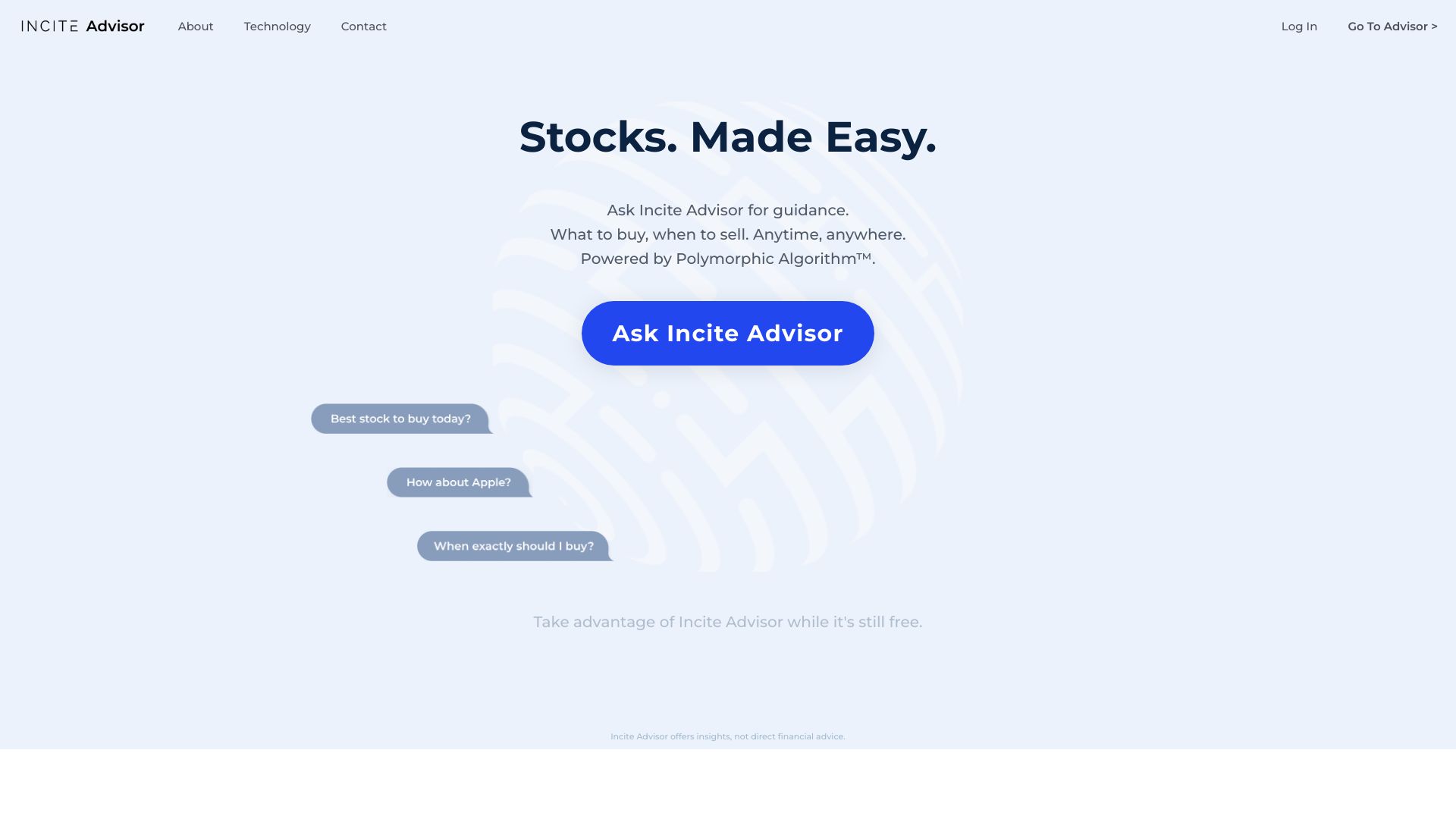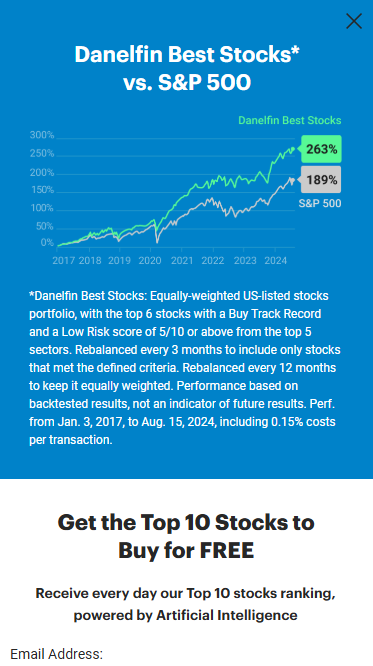20 Good Advice For Deciding On AI Stock Trading Platform Sites
20 Good Advice For Deciding On AI Stock Trading Platform Sites
Blog Article
Top 10 Tips To Assess The Security And Privacy Of Ai Stock Trading Platforms
Because they handle sensitive personal and financial data, security and security are paramount when using AI trading platforms that predict/analyze price of stocks. In the event of a breach, or misuse of data, it can cause significant financial loss and reputational damage. These are the top ten suggestions to help you understand the privacy and security capabilities on these platforms.
1. Take into consideration encryption of data
Transmitting data encrypted Be sure that the platform is using secure protocols (e.g. TLS/SSL) to secure information transmitted between your devices and their servers.
Verify the encryption at rest. Check to see if sensitive data is encrypted on the platform's servers using strong encryption standards (e.g. AES-128).
End-to-end encryption: Determine if your platform provides encryption from beginning to end for communications and data that are sensitive.
2. Examine the authenticity methods
Two-factor authentication (also called copyright) is a fantastic method of increasing security.
Find out about biometric authentication options for mobile applications (e.g. facial recognition, fingerprint).
Password policy: Check to find out if your provider has strict rules regarding passwords.
3. Examine for Compliance
Financial regulations: Make sure that the platform is in compliance with the applicable financial regulations (e.g. SEC, FINRA or MiFID II).
Data protection law: If your business is with or are located in the region legally governed by these laws, ensure the compliance.
Audit certifications. Verify that the platform you are considering has been through third-party assessments of security or certifications.
Review Controls for Access to Data
Role-based access: Ensure the platform has access control based on role (RBAC) to restrict access to data to only authorized users.
Verify whether you can set permissions at granular levels for different team members.
Activity monitoring: Verify that the platform tracks and monitors user activity for any suspicious activity.
5. Assess the vulnerability of your organization.
Regular updates - Ensure that your platform is updated with software frequently to fix any weaknesses.
Verify that the platform is routinely subjected to penetration testing to identify security vulnerabilities and fix them.
Bug bounty programs: Find out whether the platform offers an incentive program for bug bounty to encourage security researchers from outside to report vulnerabilities.
6. Evaluate Data Privacy Policies
Transparency: Read the privacy policies on the website to understand what data you provide will be used, collected and shared.
Data minimization is a method of ensuring that only the data necessary for operation are gathered by the platform.
Third-party data sharing: Check that the platform is able to share your information with a third party and in the event that it is in the process of sharing, what.
7. Secure API use can be monitored
API security: Ensure that the API security of the platform API uses secure authentication methods, like OAuth as well as API keys, to encrypt data exchanges.
Rate-limiting: Verify whether the API has a rate limit to stop abuse and brute force attacks.
Verify access logs. Verify that the system tracks API usage, and logs it to track usage.
8. Assess the recovery of an incident and respond
Incident response plan: Ensure that your platform is equipped with an incident response plan for handling data breaches or security incidents.
Policies for notification: Make sure that users are informed promptly in the event of a security incident.
Data backups - Check that your platform is equipped with a plan in place for disaster recovery, and that it regularly backs up data up.
9. Review Physical Security Measures
Data center security: Ensure that the platform's servers are hosted in secure data centers with physical security measures (e.g. surveillance, access controls).
Redundancy - Make sure that your platform is outfitted with redundant systems to ensure that data is available if hardware fails.
Geographic distribution: Ensure that data is distributed in several locations in order to increase resilience.
10. Test privacy safeguards for users
Data deletion: Ensure the platform will allow you to erase your personal information permanently when you decide to stop using the service.
Privacy settings: Make sure to check if the platform provides privacy settings to limit the data that is publicly available or shared.
Verify the data's anonymity for analytics and machine learning.
Bonus Tips
User reviews and feedback: Use reviews and feedback to judge the reputation of a website for privacy and security.
Trial period for free: Experience the privacy controls of the platform and security features by using the demo.
Customer Support: Be sure that the platform offers a solid support for problems or issues related to security.
Follow these tips to evaluate the security and privacy levels of AI platforms for stock prediction and analysis. This way, your data and financial information are secure. A secure trading platform is not only a method to safeguard your assets, it also builds confidence and trust. Check out the recommended ai stock for more recommendations including options ai, ai trading, ai stock trading app, using ai to trade stocks, incite, ai investing, ai trading, ai stock market, best ai for trading, ai investing platform and more.
Top 10 Tips To Assess The Upkeep And Updates Of Ai Stock Trading Platforms
Assessing the updates and maintenance of AI-powered trading and stock prediction platforms is crucial to ensure that they remain effective, secure, and aligned with evolving market conditions. Here are the top ten tips for evaluating update and maintenance methods:
1. Updates are regularly made
Tip: Find out how often your platform updates (e.g. quarterly, monthly weekly, quarterly).
The reason: Regular updates show the development of a proactive approach and sensitivity to market trends.
2. Transparency of Release Notes in Release Notes
Read the notes on the platform's release to see what improvements or changes are being made.
Transparent release notes demonstrate the platform's commitment to continuous improvement.
3. AI Model Retraining Schedule
Tips: Find out how often the AI models are trained using new data.
The reason: Markets change, and models must adapt to remain relevant and accurate.
4. Bug Fixes and Issue Resolution
Tip: Assess how fast the platform can address technical issues or bugs identified by users.
Why bugs are fixed as soon as possible in order to make sure that the platform remains robust and efficient.
5. Updates to Security
TIP: Check if the platform regularly updates its security protocols to safeguard personal data of users.
The reason: Cybersecurity is a crucial aspect of financial platforms. It assists in protecting against fraud and breaches.
6. Integration of New Features
Find out if any new features are introduced (e.g. new databases or advanced analytics) based on user feedback and market trends.
Why: Feature updates demonstrate innovation and responsiveness to user needs.
7. Backward Compatibility
Tips: Ensure that the updates you install do not need major reconfigurations or interrupt the functionality of your current system.
Why: The backward compatibility of the software makes sure that the software can be used with ease.
8. Communication between Maintenance Workers
You can evaluate the communication of maintenance schedules and downtimes to users.
Why Clare Communication is beneficial: It reduces interruptions and increases trust.
9. Performance Monitoring and Optimization
TIP: Ensure that the platform constantly monitors performance metrics such as accuracy or latency and then optimizes their platforms.
Why constant optimization is important: It ensures that the platform is effective and expandable.
10. Compliance with Regulation Changes
Tip: Check to see whether your platform is up-to-date with the latest technology, policies, and laws regarding data privacy or the latest financial regulations.
Why: It is important to adhere to regulations in order to minimize legal liabilities and to maintain confidence among users.
Bonus Tip: User Feedback Integration
Find out if the platform incorporates feedback from users in the maintenance and update process. This shows a genuinely user-centric approach and a commitment to improving.
You can look at these elements to make sure you are selecting a platform for AI prediction of stocks and trading that is up to the minute, well-maintained and capable of adapting to the ever-changing dynamics of the market. View the top ai stock investing examples for website examples including ai for trading stocks, stock predictor, best ai trading platform, best ai stocks to buy now, free ai tool for stock market india, ai investment tools, stock predictor, chart ai trading, free ai stock picker, ai stock trader and more.